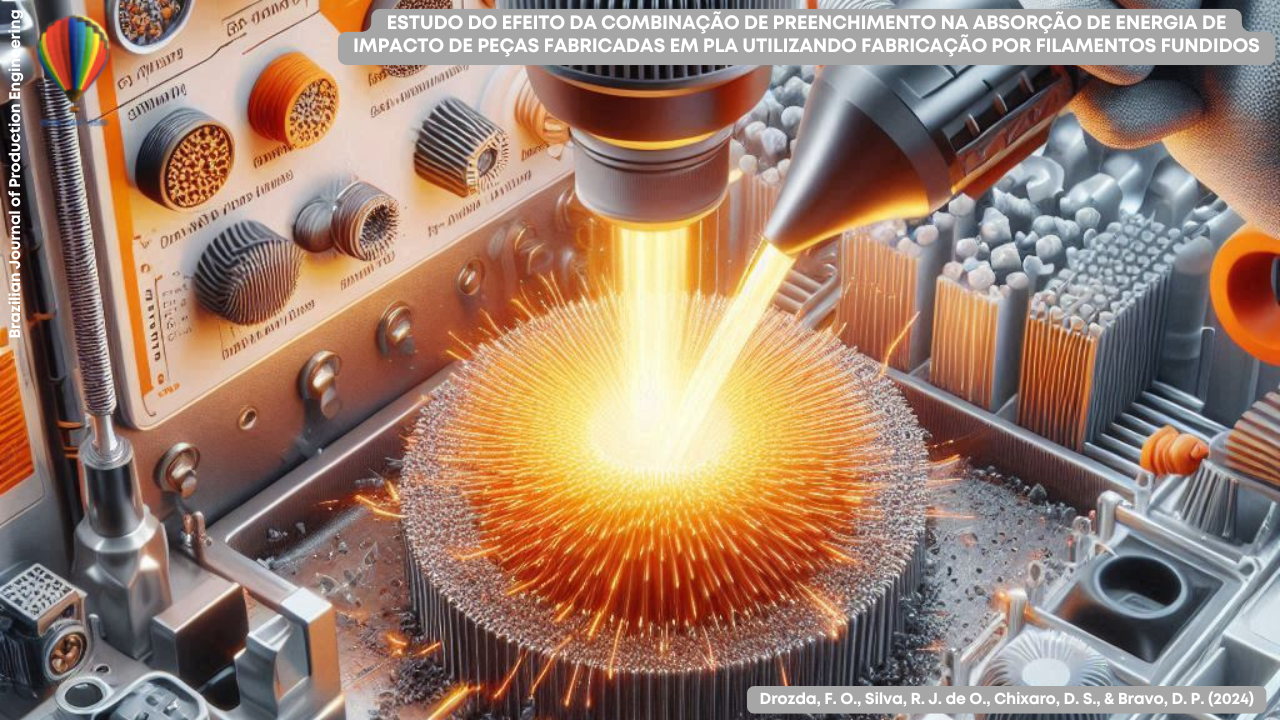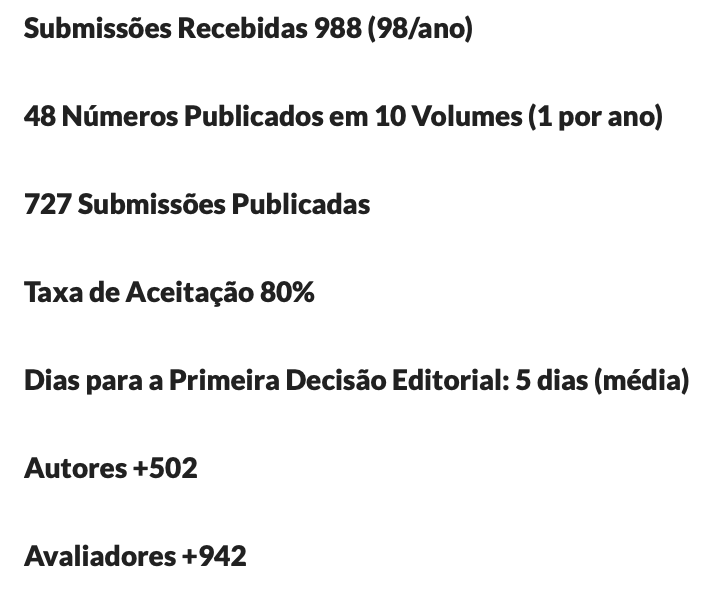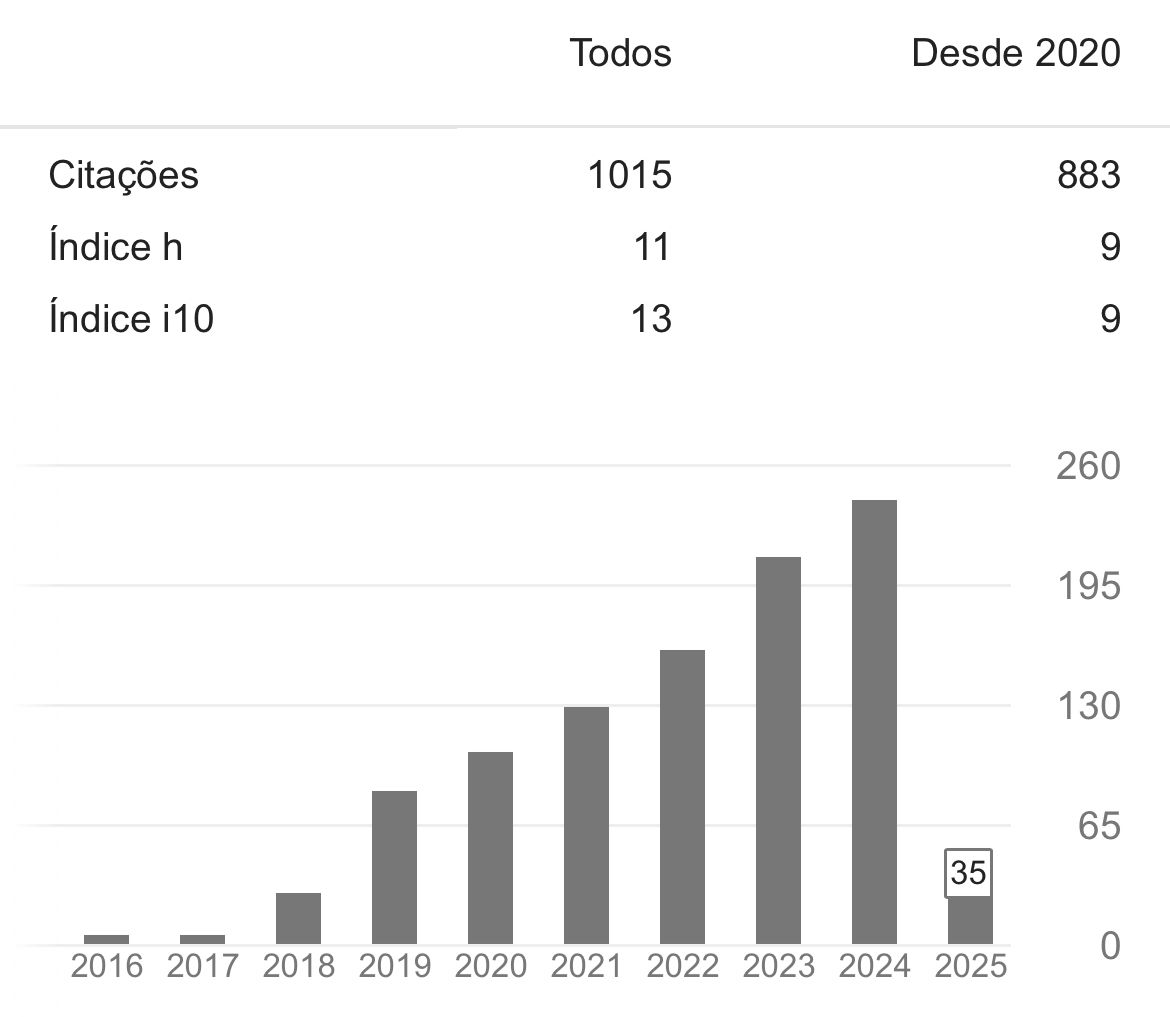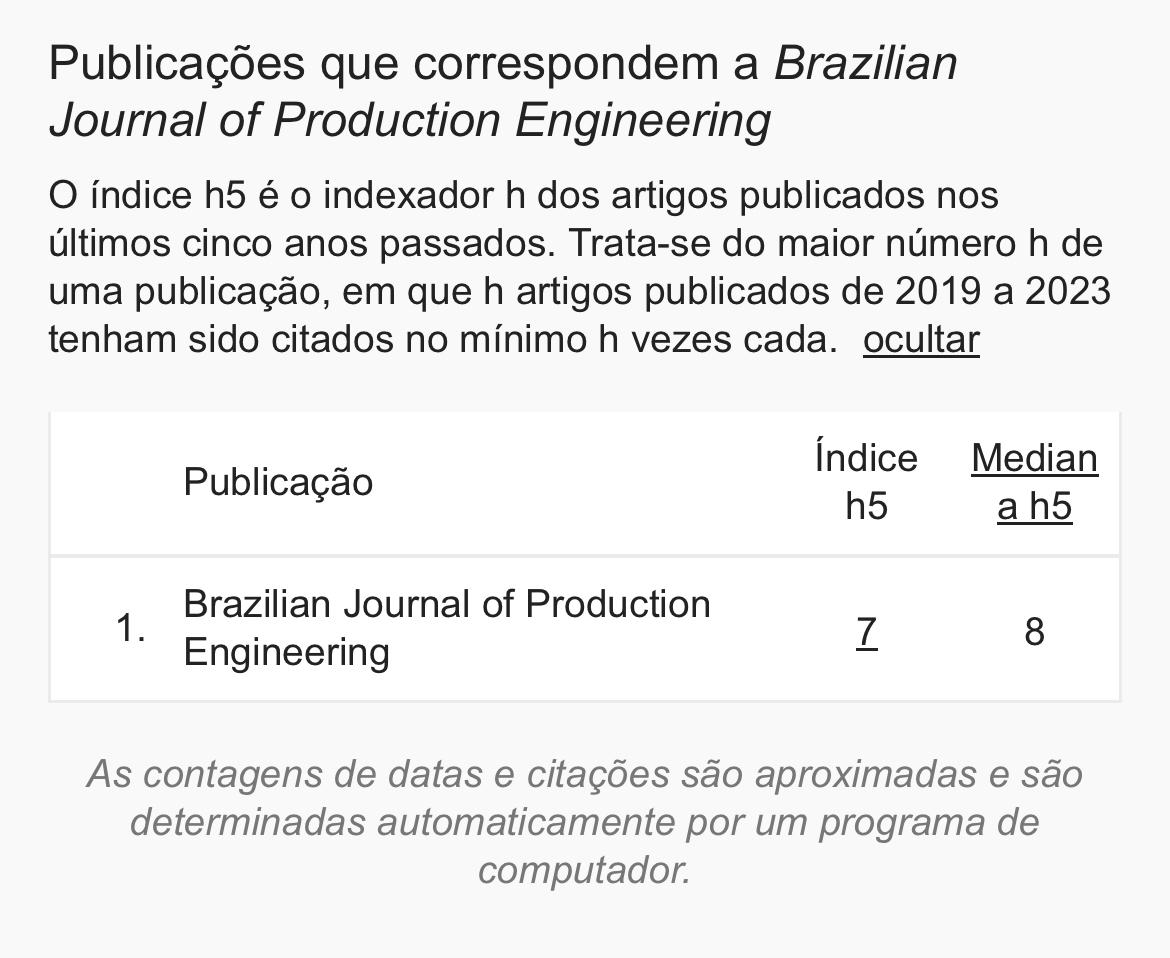Estudo do efeito da combinação de preenchimento na absorção de energia de impacto de peças fabricadas em pla utilizando fabricação por filamentos fundidos
DOI:
https://doi.org/10.47456/bjpe.v10i3.44945Palavras-chave:
Fabricação por Filamento fundido, mesoestrutura;, preenchimento híbrido, teste CharpyResumo
A Fabricação por Fusão de Filamento (FFF) é uma das tecnologias de manufatura aditiva mais difundidas. No entanto, as peças impressas muitas vezes são menos confiáveis quando comparadas com aquelas produzidas por processos tradicionais de fabricação devido à variabilidade na qualidade das impressões e a possíveis imperfeições introduzidas durante o processo de impressão. Portanto, investigar o comportamento mecânico destas peças é um importante tópico de pesquisa e comum interesse entre acadêmicos e fabricantes. Este estudo propõe uma nova abordagem para projetar a estrutura interna das peças, combinando duas regiões distintas com diferentes preenchimentos. O objetivo deste estudo foi investigar o comportamento dessa nova mesoestrutura na tenacidade das peças. Para isto, dois conjuntos de corpos de prova em PLA foram fabricados. O primeiro construído com preenchimento único e o segundo com preenchimento híbrido. Os corpos de prova foram testados por Impacto Charpy conforme norma ASTM D6110-10. Os resultados foram analisados por ANOVA e a microestrutura avaliada por microscopia. Os resultados mostraram que o uso do recurso híbrido se mostrou eficiente no aumento da tenacidade para densidades de preenchimento de 20%. Para as amostras com densidade de preenchimento acima de 50%, o aumento na tenacidade não foi significativo, e houve considerável aumento no tempo de impressão e no consumo de material para fabricação também. Em situações em que se deseja estruturas mais leves e com maior resistência ao impacto, o uso do preenchimento híbrido tem significativa relevância.
Downloads
Referências
Chyr, G. & DeSimone, J. M. (2023). Review of high-performance sustainable polymers in additive manufacturing. Green Chemistry, 25(2), 453-466. https://doi.org/10.1039/D2GC03474C DOI: https://doi.org/10.1039/D2GC03474C
Reverte, J. M., Caminero, M. Á., Chacón, J. M., García-Plaza, E., Núñez, P. J., & Becar, J. P. (2020). Mechanical and geometric performance of PLA-based polymer composites processed by the fused filament fabrication additive manufacturing technique. Materials, 13(8), 1924. https://doi.org/10.3390/ma13081924 DOI: https://doi.org/10.3390/ma13081924
Fico, D., Rizzo, D., Casciaro, R., & Esposito Corcione, C. (2022). A review of polymer-based materials for fused filament fabrication (FFF): focus on sustainability and recycled materials. Polymers, 14(3), 465. https://doi.org/10.3390/polym14030465 DOI: https://doi.org/10.3390/polym14030465
Bhatia, A. & Sehgal, A. K. (2023). Additive manufacturing materials, methods and applications: A review. Materials Today: Proceedings, 81, 1060-1067. https://doi.org/10.1016/j.matpr.2021.04.379 DOI: https://doi.org/10.1016/j.matpr.2021.04.379
Zanjanijam, A. R., Major, I., Lyons, J. G., Lafont, U., & Devine, D. M. (2020). Fused filament fabrication of peek: A review of process-structure-property relationships. Polymers, 12(8), 1665. doi: 10.3390/polym12081665 DOI: https://doi.org/10.3390/polym12081665
Jatti, V. S., Sapre, M. S., Jatti, A. V., Khedkar, N. K., & Jatti, V. S. (2022). Mechanical properties of 3D-printed components using fused deposition modeling: optimization using the desirability approach and machine learning regressor. Applied System Innovation, 5(6), 112. https://doi.org/10.3390/asi5060112 DOI: https://doi.org/10.3390/asi5060112
Hozdić, E. (2024). Characterization and Comparative Analysis of Mechanical Parameters of FDM-and SLA-Printed ABS Materials. Applied Sciences, 14(2), 649. https://doi.org/10.3390/app14020649 DOI: https://doi.org/10.3390/app14020649
Gao, X., Qi, S., Kuang, X., Su, Y., Li, J., & Wang, D. (2021). Fused filament fabrication of polymer materials: A review of interlayer bond. Additive Manufacturing, 37, 101658. https://doi.org/10.1016/j.addma.2020.101658 DOI: https://doi.org/10.1016/j.addma.2020.101658
Tanveer, M. Q., Suhaib, M., & Haleem, A. (2020). A New 3D Benchmarking Artifact to Evaluate Dimensional Accuracy and Geometric Tolerancing of Additive Manufacturing Technique. In Recent Advances in Mechanical Engineering: Select Proceedings of NCAME 2019 (pp. 261-273). Springer Singapore. https://doi.org/10.1007/978-981-15-1071-7_22 DOI: https://doi.org/10.1007/978-981-15-1071-7_22
Mishra, P. K., Senthil, P., Adarsh, S., & Anoop, M. S. (2021). An investigation to study the combined effect of different infill pattern and infill density on the impact strength of 3D printed polylactic acid parts. Composites Communications, 24, 100605. https://doi.org/10.1016/j.coco.2020.100605 DOI: https://doi.org/10.1016/j.coco.2020.100605
Patterson, A. E., Pereira, T. R., Allison, J. T., & Messimer, S. L. (2019). IZOD impact properties of full-density FDM polymer materials with respect to raster angle and print orientation. Proceedings of IMECHE Part C. J. Mech. Eng. Sci, 1-13. http://dx.doi.org/10.1177/0954406219840385 DOI: https://doi.org/10.1177/0954406219840385
Mustafa, M. S., Muneer, M. A., Zafar, M. Q., Arif, M., Hussain, G., & Siddiqui, F. A. (2022). Process parameter optimization for Fused Filament Fabrication additive manufacturing of PLA/PHA biodegradable polymer blend. International Polymer Processing, 37(1), 1-14. http://dx.doi.org/10.1515/ipp-2021-4115 DOI: https://doi.org/10.1515/ipp-2021-4115
Ansari, A. A. & Kamil, M. (2022). Izod impact and hardness properties of 3D printed lightweight CF-reinforced PLA composites using design of experiment. International Journal of Lightweight Materials and Manufacture, 5(3), 369-383. https://doi.org/10.1016/j.ijlmm.2022.04.006
Ahmed, M., Islam, M. R., Vanhoose, J., Hewavitharana, L., Stanich, A., & Hossain, M. (2016, November). Comparisons of Bending Stiffness of 3D Printed Samples of Different Materials. In ASME International Mechanical Engineering Congress and Exposition (Vol. 50633, p. V009T12A023). American Society of Mechanical Engineers. http://dx.doi.org/10.1115/IMECE2016-65119 DOI: https://doi.org/10.1115/IMECE2016-65119
Messimer, S. L., Rocha Pereira, T., Patterson, A. E., Lubna, M., & Drozda, F. O. (2019). Full-density fused deposition modeling dimensional error as a function of raster angle and build orientation: Large dataset for eleven materials. Journal of Manufacturing and Materials Processing, 3(1), 6. https://doi.org/10.3390/jmmp3010006 DOI: https://doi.org/10.3390/jmmp3010006
Baptista, R., Guedes, M., Pereira, M. F. C., Maurício, A., Carrelo, H., & Cidade, T. (2020). On the effect of design and fabrication parameters on mechanical performance of 3D printed PLA scaffolds. Bioprinting, 20, e00096. https://doi.org/10.3390/jmmp3010006 DOI: https://doi.org/10.1016/j.bprint.2020.e00096
Şahin, İ., Top, N., & Bülbül, R. (2021). Effect of Infill Density and Infill Pattern on Mechanical Properties in Fused Deposition Modeling (FDM). Innovative Approaches in Additive Manufacturing Congress (IA4AM), Ankara, Türkiye, ss.65-74.
Khan, S., Joshi, K., & Deshmukh, S. (2022). A comprehensive review on effect of printing parameters on mechanical properties of FDM printed parts. Materials Today: Proceedings, 50, 2119-2127.
https://doi.org/10.1016/j.matpr.2021.09.433 DOI: https://doi.org/10.1016/j.matpr.2021.09.433
Zisopol, D. G., Ion, N., & Portoaca, A. I. (2023). Comparison of the Charpy Resilience of Two 3D Printed Materials: A Study on the Impact Resistance of Plastic Parts. Engineering, Technology & Applied Science Research, 13(3), 10781-10784. https://doi.org/10.48084/etasr.5876 DOI: https://doi.org/10.48084/etasr.5876
Tanveer, M. Q., Haleem, A., & Suhaib, M. (2019). Effect of variable infill density on mechanical behaviour of 3-D printed PLA specimen: an experimental investigation. SN Applied Sciences, 1, 1-12. https://doi.org/10.1007/s42452-019-1744-1 DOI: https://doi.org/10.1007/s42452-019-1744-1
Giri, J., Chiwande, A., Gupta, Y., Mahatme, C., & Giri, P. (2021). Effect of process parameters on mechanical properties of 3d printed samples using FDM process. Materials Today: Proceedings, 47, 5856-5861. https://doi.org/10.1016/j.matpr.2021.04.283 DOI: https://doi.org/10.1016/j.matpr.2021.04.283
Ansari, A. A. & Kamil, M. (2022). Izod impact and hardness properties of 3D printed lightweight CF-reinforced PLA composites using design of experiment. International Journal of Lightweight Materials and Manufacture, 5(3), 369-383. https://doi.org/10.1016/j.ijlmm.2022.04.006 DOI: https://doi.org/10.1016/j.ijlmm.2022.04.006
Marques, J. M. & Marques, M. A. M. (2005). Estatística básica para os cursos de engenharia. Curitiba: Domínio do Saber.
Farah, S., Anderson, D. G., & Langer, R. (2016). Physical and mechanical properties of PLA, and their functions in widespread applications — A comprehensive review. Advanced Drug Delivery Reviews, 107, 367-392. https://doi.org/10.1016/j.addr.2016.06.012 DOI: https://doi.org/10.1016/j.addr.2016.06.012

Downloads
Publicado
Como Citar
Edição
Seção
Licença
Copyright (c) 2024 Brazilian Journal of Production Engineering

Este trabalho está licenciado sob uma licença Creative Commons Attribution 4.0 International License.

Atribuição 4.0 internacional CC BY 4.0 Deed
Esta licença permite que outros remixem, adaptem e desenvolvam seu trabalho não comercialmente, contanto que eles creditem a você e licenciem suas novas criações sob os mesmos termos.
















































































